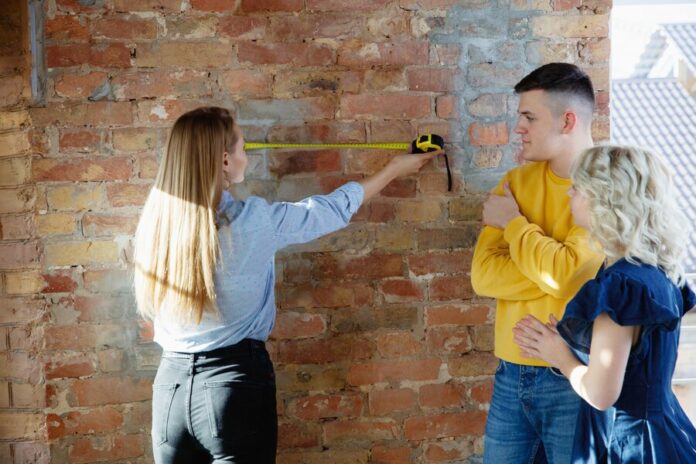Fire damage to your home can be one of the most devastating experiences you may encounter as a homeowner. Beyond the initial shock and loss, the process of reconstructing your home can be daunting and overwhelming.
However, with the right guidance and practical tips, you can navigate through this challenging time more effectively.
In this comprehensive guide, we will delve into the essential steps and insights necessary for reconstructing your home after fire damage.
1. Assessing the Damage and Securing the Site
Before embarking on any reconstruction efforts, ensuring the safety of yourself and others is paramount. Conduct a thorough assessment of the damage to determine the extent of the destruction.
Check for structural integrity and potential hazards such as weakened walls, unstable floors, or hazardous materials.
Secure the site by cordoning off dangerous areas and installing temporary fencing if necessary. If the damage is extensive, consider hiring a professional inspector to evaluate the structural stability of your home.
2. Contact Your Insurance Provider
Promptly contact your insurance provider to initiate the claims process. Provide detailed documentation of the damage, including photographs and inventory lists of affected items.
Familiarize yourself with your insurance policy coverage, including provisions for fire damage, temporary housing, and reconstruction costs.
Keep thorough records of all communication with your insurance company, including claim numbers and the names of representatives you speak with.
3. Hiring Professionals
Selecting reputable and experienced fire restoration experts from DEL MAR is crucial for ensuring that the cleanup and restoration process is conducted efficiently and effectively.
These professionals possess the necessary expertise and specialized equipment to assess the extent of fire damage, mitigate potential health hazards such as smoke residue and mold growth, and restore your home to its pre-fire condition.
4. Developing a Comprehensive Reconstruction Plan
Collaborate with your chosen contractors to develop a detailed reconstruction plan tailored to your specific needs and preferences.
Prioritize essential repairs and establish a realistic timeline for completion. Consider factors such as the availability of materials, weather conditions, and any additional permits or approvals required for the reconstruction process.
Regularly communicate with your contractors to monitor progress and address any unexpected challenges that may arise.

5. Addressing Water and Smoke Damage
In addition to the direct impact of the fire, water and smoke damage can pose significant challenges during the reconstruction process.
Water used to extinguish the fire can seep into walls, floors, and other structural elements, leading to mold growth and further deterioration.
Smoke residue can permeate surfaces and cause lingering odors if not properly addressed. Work with restoration specialists to thoroughly clean and deodorize affected areas, ensuring a safe and healthy environment for reconstruction.
6. Restoring Structural Integrity
Rebuilding your home’s structural integrity is a critical step in the reconstruction process. Depending on the extent of the damage, this may involve repairing or replacing damaged load-bearing walls, floors, and roof structures.
Work closely with structural engineers and contractors to ensure that all repairs comply with building codes and safety standards.
Reinforce weakened areas and implement measures to enhance fire resistance and durability, such as installing fire-rated materials and sprinkler systems.
7. Upgrading Electrical and Plumbing Systems
Fire damage can compromise the integrity of your home’s electrical and plumbing systems, posing potential safety hazards if not addressed promptly. Inspect wiring, outlets, and fixtures for damage, and replace any components that have been exposed to heat or moisture.
Upgrade to modern, code-compliant electrical and plumbing systems to enhance efficiency and safety. Consider installing additional smoke detectors and fire suppression systems to provide added protection against future emergencies.
8. Choosing Materials and Finishes
Selecting appropriate materials and finishes is an integral part of the reconstruction process, allowing you to restore your home’s aesthetics while ensuring durability and functionality.
Opt for fire-resistant building materials such as fire-rated drywall, metal roofing, and ceramic tile flooring to minimize the risk of future fire damage.
Choose finishes that are easy to clean and maintain, such as laminate or vinyl flooring, and consider incorporating energy-efficient features to reduce utility costs and environmental impact.

9. Ensuring Code Compliance and Permits
Obtaining the necessary permits and ensuring compliance with local building codes and regulations are essential steps in the reconstruction process.
Work closely with your contractors and local authorities to obtain permits for structural repairs, electrical and plumbing upgrades, and any other necessary renovations.
Ensure that all work is performed by licensed professionals and undergoes thorough inspections to verify compliance with safety standards.
10. Emotional Support and Coping Strategies
Recovering from fire damage goes beyond the physical reconstruction of your home; it also entails coping with the emotional toll of the experience.
Seek support from friends, family, or counseling services to help process feelings of grief, loss, and anxiety.
Take time to prioritize self-care and engage in activities that promote relaxation and stress relief. Remember that rebuilding your home is a gradual process, and it’s okay to ask for help when needed.
Conclusion
Reconstructing your home after fire damage requires careful planning, coordination, and perseverance.
By prioritizing safety, collaborating with experienced professionals, and taking proactive steps to address damage and compliance issues, you can navigate through the reconstruction process more effectively.
Remember to prioritize your well-being and seek support as needed to ensure a successful recovery journey.


